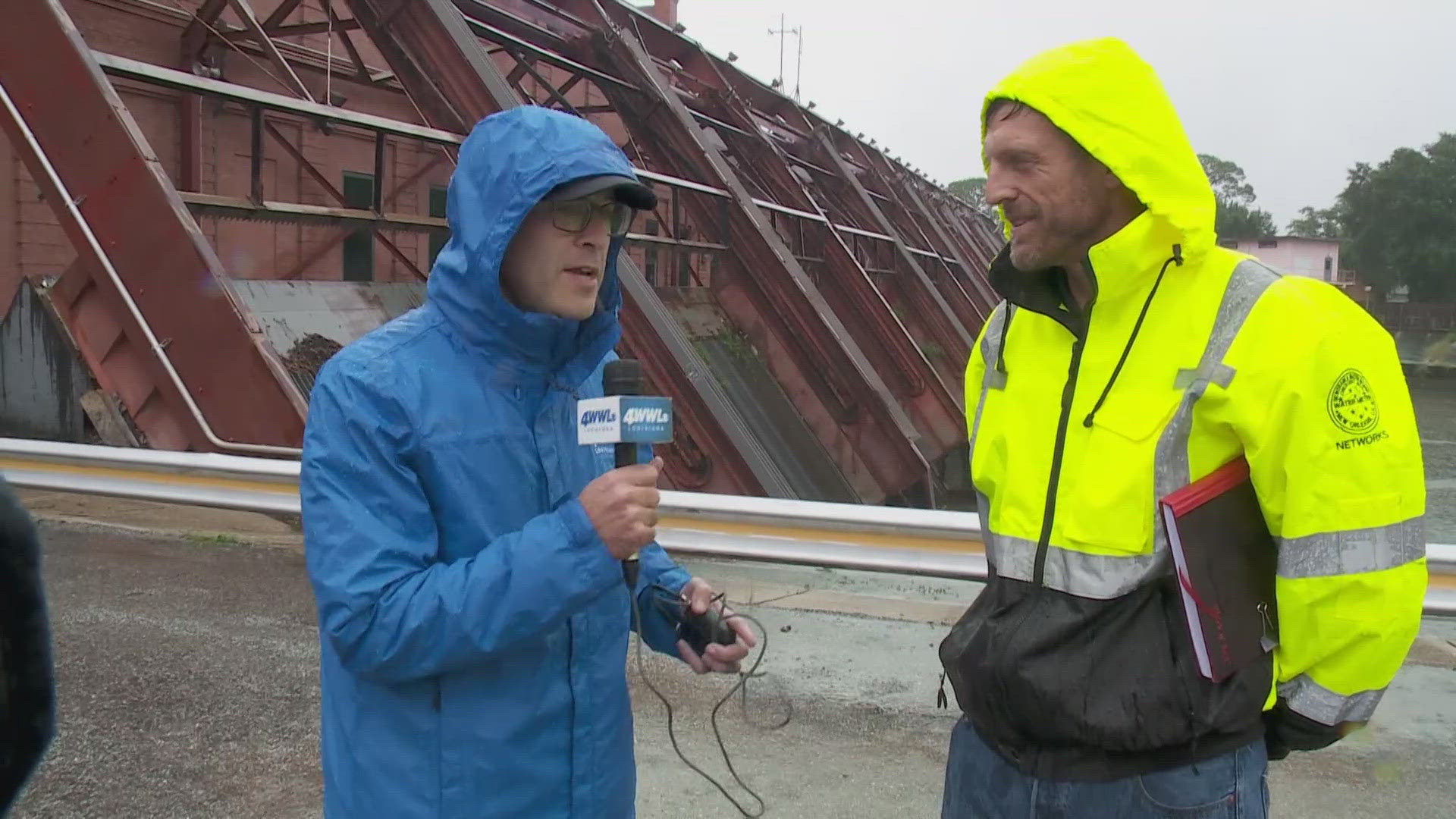NEW ORLEANS — As Hurricane Francine barreled toward New Orleans, the Sewerage and Water Board’s antiquated drainage system was as ready as it’s been in a long time.
But there’s a difference between preparation and execution.
The system performed well overall in difficult conditions, but in specific parts of the city, some of the same problems that have plagued it for years reared their ugly heads.
In Lakeview, residents watched cars and first-floor basements flood for the first time since the massive city-wide pump and power failures of Aug. 5, 2017.
The heaviest rain bands dumped an estimated 3-4 inches an hour from 7:30 p.m. to 9:30 p.m. Wednesday, but smaller streets and even some portions of thoroughfares like Canal Boulevard were completely impassable until well after midnight.
“And I get (text messages) from my mom, going from ‘all good’ to ‘water is pooling up in the back and front’ to, immediately after, ‘the whole downstairs is flooded,’” said Eli Durham, who was trying to help his parents get a generator to their flooded house around 11 p.m.
“How much can a homeowner in this area do before they throw their hands up and say, ‘I can't afford to do this anymore’?”
The Lakeview area was beset by failures on all sides. At Pump Station 12 in the West End section, the only drainage pump tripped offline.
At Pump Station 7, on the opposite end of Lakeview, one of the pumps couldn’t get power because a piece of equipment that converts modern electricity from Entergy into an old-fashioned format used only by the city’s oldest pumps, failed.
In the Michoud area of New Orleans East, the pumps lost electricity supplied directly by Entergy when the power company lost the ability to deliver it. The S&WB cleared most of the streets by morning using backup generators. But then, around noon Thursday, residents in the Oak Island subdivision reported the water was rising again.
“The water’s coming out of this drain out here; it’s coming up, not going in,” Deloris Bridges said. “And it’s the same thing that happened a few months ago. And I’m told, and I did call Sewerage & Water Board, that Pump (Station) 15 is not on.”
S&WB Executive Director Ghassan Korban told WWL Louisiana that Pump Station 15 was functioning Thursday afternoon and the canals it drains into the Intracoastal Waterway had been “pumped down.”
Korban expressed pride in the agency’s good work overall during Hurricane Francine.
“I think many things yesterday worked,” he said. “And I really have to give a huge shout out to my staff who just, all hands on deck all night long, just making good decisions that really paid such dividends for us in terms of all these good things that happened.”
Ironically, in the agency’s antiquated power-generation system, the newest source of power to run the pumps suffered the most significant failure of the night – five backup diesel generators purchased with $14 million in emergency funds after the 2017 floods.
All five of the so-called EMDs – electro-motive diesel generators – went down at once because an auxiliary generator that feeds them tripped. After losing more than half an hour trying to restore the EMDs at the most critical time, the oldest and most often broken generator in the system, 108-year-old Turbine 4, finally got electricity back to the pumps in Lakeview.
Korban said he could second-guess the decision, but he used the EMDs as front-line power instead of Turbine 4 because he lacked confidence in the steam-powered dinosaur.
“We don't want to put a lot of load on it because … you're putting all your eggs in one basket,” he said.
S&WB General Superintendent Steve Nelson had expressed confidence in the hours before Francine made landfall because the system had more redundant sources of power available. The agency had 70 megawatts of self-generated power capacity, far beyond the expected peak load of 44 megawatts.
But when the EMDs went down and the system lost 12.5 megawatts, it could not quickly draw on the full 20 megawatts from Turbine 4. Initially, the system was only drawing 5 megawatts from Turbine 4, and before it could fire up to full capacity, critical minutes went by with the S&WB no longer able to generate peak load.
“Nothing happens in 10 or 15 minutes. Usually, it's a 30 minute or more increments, unfortunately,” Korban said.
He said the lesson from Francine would “drive a change in strategy” to use Turbine 4 as a main source of power and the EMDs as they were intended, as backup for the turbines.
Korban said “cobbling together” solutions will be the only way until Entergy can start supplying hardened power to the whole system from a dedicated substation, with a brand-new gas-fired turbine. Hurricane Ida set that project back, forcing Entergy to withdraw key financing for the project.
In 2022, crews broke ground on the West Power Complex project and it was scheduled to be ready for the 2024 hurricane season, with startup funds from the American Rescue Plan. But state and local funding problems have stalled the project, and it’s now pushed back to August 2025.
► Get breaking news from your neighborhood delivered directly to you by downloading the new FREE WWL-TV News app now in the IOS App Store or Google Play.


